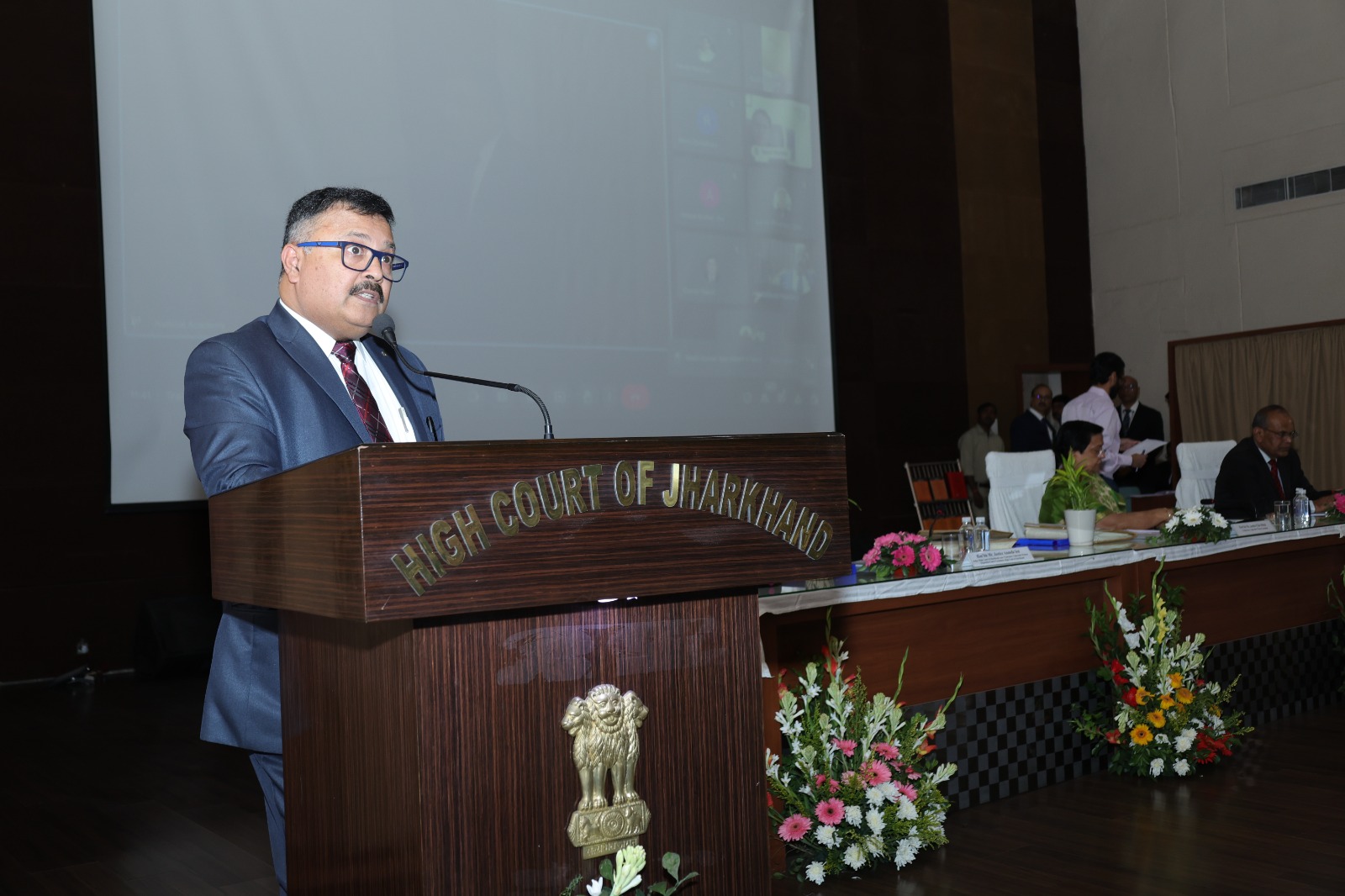Allahabad HC Dismisses Plea To Rename High Court as Prayagraj HC [Read Order]
![Allahabad HC Dismisses Plea To Rename High Court as Prayagraj HC [Read Order] Allahabad HC Dismisses Plea To Rename High Court as Prayagraj HC [Read Order]](https://www.livelaw.in/h-upload/2019/11/21/1500x900_366885-allahabad-high-court-1.jpg)
Recently, the Allahabad High Court dismissed a plea to rename itself either as Prayagraj High Court or the Uttar Pradesh High Court.The Bench of Justice Pankaj Kumar Jaiswal and Justice Dinesh Kumar Singh observed,"This Court is not empowered to direct the Parliament or State Legislature to enact a particular law and, therefore, we find this petition a frivolous petition, which has been...
Recently, the Allahabad High Court dismissed a plea to rename itself either as Prayagraj High Court or the Uttar Pradesh High Court.
The Bench of Justice Pankaj Kumar Jaiswal and Justice Dinesh Kumar Singh observed,
"This Court is not empowered to direct the Parliament or State Legislature to enact a particular law and, therefore, we find this petition a frivolous petition, which has been filed with the sole purpose of gaining some publicity"
The History of Allahabad High Court in brief (as discussed by the Court)
On 24th June, 1864, the Secretary of State for India asked the Governor-General in council "to take into consideration the question of establishing High Court in the North-Western Provinces and furnish me with your opinion on the subject at an early date as practicable."
Four years later from the establishment of three High Courts in Presidency Towns, on 16th March, 1866, the High Court of Judicature for the North Western Provinces came into existence under Letters Patent, replacing the only Sudder Diwani Adalat and Nizamut Adalat.
Letters Patent, as subsequently amended, is the present Charter of High Court of Judicature at Allahabad.
Aforesaid Charter conferred jurisdiction upon newly formed High Court in respect of Civil, Criminal, Testamentary and Interstate as well as Matrimonial matters.
First sitting of High Court took place at Agra on 18.06.1866, but in 1868 it was shifted to Allahabad.
Further, by Section 101 (5) of Government of India Act, 1915-1919, the name of 'High Court for the North-Western Provinces' was changed to "High Court of Judicature at Allahabad".
The Indian Independence Act was passed in 1947. In 1948, the Governor-General, in exercise of powers under Section 229 of the Government of India Act, 1935, issued U.P. High Courts (Amalgamation) Order, 1948, published in the gazette of Government of India.
Clause-III of the Amalgamation Order, from appointed date i.e. 26th July, 1948, provided that High Court in Allahabad and the Chief Court in Oudh shall be amalgamated and constitute one High Court in the name of 'High Court of Judicature at Allahabad'.
All these enactments have now been consolidated and repealed by the provisions of the Constitution of India which came into force on 26th January 1950.
With the aforesaid historical backdrop, it is evident that High Court of Allahabad was created by the Royal Charter.
Initially, it was called as 'High Court of Judicature for North-Western Provinces' which had the area of aforesaid Province but Oudh was a different Province, not governed by North-Western Provinces. 'High Court of Judicature for North Western Provinces' subsequently became 'High Court of Judicature at Allahabad'.
Constitutional Provisions related to the High Court (as discussed by the Court)
Chapter-V of Part-VI of the Constitution of India deals with administration and powers of the High Courts. Articles 214-231 deal with the High Courts.
Therefore, all the previous enactments, dealing with establishment, administration and affairs of the High Court, are deemed to be replaced by Articles 214-231 of the Constitution of India thereby Letters Patent were also deemed to be replaced.
Article 225 of the Constitution of India deals with the High Courts, existing at the time of enacting the Constitution of India, which allowed the existing High Court to continue with respective powers as were exercising immediately before the commencement of the Constitution.
Article 215 provides that there shall be a High Court for each State. Every High Court shall be a court of record and shall have all the powers of such a court including the power to punish for contempt of itself.
"By the virtue of Article 372, until and unless the Parliament amends the amalgamation order, the name of the high court, which is 'High Court of Judicature at Allahabad' cannot be changed", the Court noted.
Court's Observations
The Court has observed in its order that when the petitioner was put a question during the course of arguments as to who could change the name of the High Court, he did not give an answer.
Further, the Court observed that in a constitutional democracy, all organs of the State, i.e. executive, legislature and judiciary, are required to act and perform their respective functions within the limits prescribed by the Constitution of India.
In this context, the Court stated,
"The separation of powers is the foundation of the functioning of a democratic polity governed by rule of law. One organ should not encroach upon the power and functions of other organs."
The Court further remarked,
"The Courts cannot direct the Legislature to enact a particular law and, therefore, this Court finds that the present writ petition is nothing but a 'publicity stunt litigation' which has been filed to get some publicity. If the petitioner is so concerned, he should convince the Parliament for change of name of the High Court. If the petitioner is so concerned, he should convince the Parliament for change of name of the High Court." (emphasis supplied)
The Court, therefore, dismissed this petition, but refrained from imposing cost as the petitioner is none other than a practising Advocate of this Court.
[Read Order]




